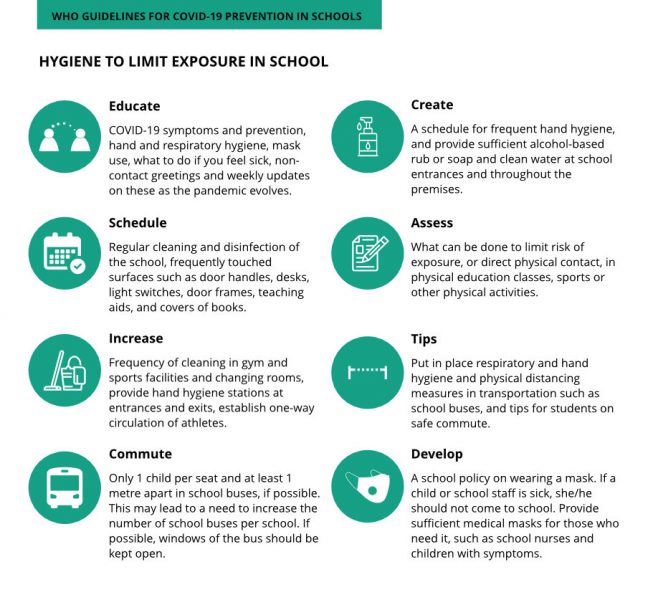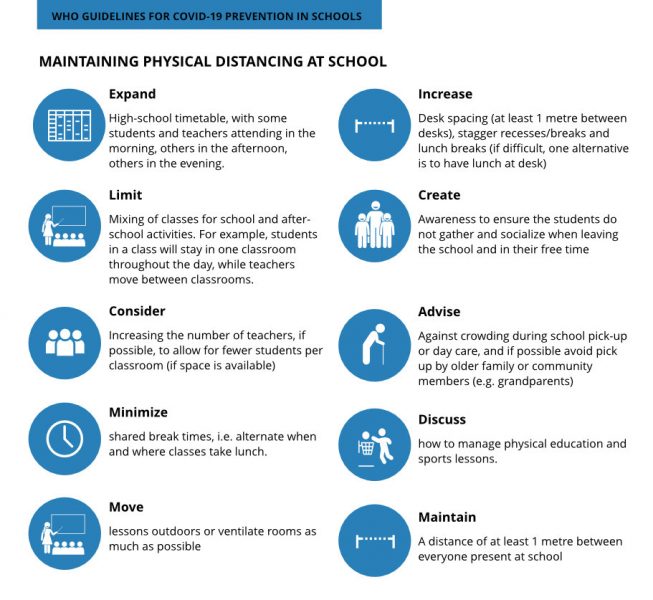
Back to school amid COVID-19: Rising cases leave parents in dilemma
Even as the schools have hinted on resuming classes from July 1, parents are in grave dilemma of sending their children back to school amid the coronavirus threat still looming.

Even as the schools have hinted on resuming classes from July 1, parents are in grave dilemma of sending their children back to school amid the coronavirus threat still looming.
Among many such parents is Bhavani*, who is worried to send her fourth class-studying son back to his private school in Chennai.
The schools in Tamil Nadu have remained shut since the second week of March, a week before the first phase of lockdown was announced, when India began seeing a gradual rise in COVID-19 cases. Almost three months since the closure, after conducting classes online and via videos, the schools have now hinted at reopening with a list of measures.
A representation by Tamil Nadu Nursery, Primary, Matriculation and CBSE Schools Association submitted to the state government has recommendations including scheduling classes on odd and even days for students in classes LKG to class five and classes six to eight.
The association has included suggestions on online classes and homework for students who are at home on alternate days, apart from ensuring that there are not more than 10-15 students in a class and the classes are held in two shifts. The representation has also sought government assistance with sanitisers and disinfecting regimen being followed in schools regularly. It also seeks certification of the status of the child’s health.
More responsibility on parents
However, even as there are districts in the state that have lesser cases, Chennai with close to 9,000 cases and 500-odd fresh cases being reported each day, is in a worrying spot.
Parents said that for those hailing from the worst affected zones like Royapuram, Thiru Vi Ka Nagar, and Kodambakkam, it is a difficult call to make.
“While social distancing norms in schools have been taken care of, what about their travel and safety in transit,” Bhavani questioned.
“My son is asthmatic and he goes to the school which is 14 kilometres away in a private van. How can we be sure that children like him don’t get infected?” she asked.

Narmada*, a class 12 student’s parent, voiced her doubts about the arrangements the school will make to ensure all children are safe.
“This particular private school has water issues every summer and now they are saying they will equip themselves with sanitisers and other measures to prevent spread. How can we be assured this will happen? Moreover, the burden is on parents to provide status of child’s health twice a month. A private practitioner will do it, but how are we going to standardise the procedure to ascertain the status?” she said.
Countries across the world have started resuming classes, with Germany reopening schools partially and France starting classes earlier this week. Spain and the United Kingdom have only been seeing a fraction of the students in schools.
Related news: COVID-19: Girls bear brunt as 154 cr students hit in school, college closure
While infection rate among children has been less than two per cent of reported cases in China, Italy and the US, researchers are still undecided about the extent of their susceptibility to the infection. Even as there are ongoing studies about their role in the chain of transmission, many argue that the opening of schools without guidelines cannot be advised.
The mother of a 3-year-old in a nursery group, Vibha Batra is certain about not sending her kid to school anytime soon.
She said, “I think we need to wait it out. The news of paediatric multisystem inflammatory syndrome (a condition in which the kids’ hearts and other organs are affected, often requiring intensive care and is linked to COVID-19), in the United States is worrying.”
Schools need time to plan
SBOA group of schools with a strength of over a 1000 students has been receiving feedback from worried parents, who are unsure about sending their wards to school.
Radhika Unni, Principal of one of the SBOA schools, said, “With 1000-odd students, we cannot have classes in one or two sittings. Apart from buses, there are vans that ply children to our school and these carry children from other schools in them as well. We also have issues about convincing young children in classes like one and two wear masks. We have to plan looking at government guidelines and are in the process of coming up with a plan.”

Schools like SJT Surana Jain Vidyalaya have been mulling over a long-term solution.
“As much as we would want to open schools and resume regular life, the present situation needs precautions and long term planning to fight this pandemic. We are aware about the anxiety that prevails among parents for their children’s safety and we are doing the best to address the same. Our first priority is our children’s safety and we plan to reopen schools only after thoroughly assessing the present development and future course of events carefully,” said Ekta Surana, trustee of the school.
The school that is technology driven with state of the art labs, is also banking on online methods.
“It is not wise to open crowded classroom teaching but with online teaching we can achieve the same goals safely, effectively and effortlessly. This is going to be our USP where We are planning to bring in 50 per cent of the strength in the class and balance will be learning online, sitting at home at the same time; they come to school every alternate days; this will help in maintaining the balance and also coping with school environment which kids truly deserve,” Ekta explained.
Not all kids have the luxury of technology at home
The primary concern for the schools has been the inequitable access to technology, said K.R. Nandakumar, state secretary, Tamil Nadu Nursery, Primary, Matriculation and CBSE Schools Association.
“Nothing can beat real and physical learning experience. Since we know that the disease is going to be amid us, we have to begin looking at ways to get on with normal learning, making some changes. Parents will not be able to manage these children at home for more. There are already more than 60 days of them at home,” he added.
He said that it would be possible to implement the recommendations in several districts like Krishnagiri and Dharmapuri among others, as they have lesser cases.
Child rights activities too have hinted that the schools must reopen, even as they bat for the safety of children.
Related news: Only 57% students have computers to attend online classes, finds survey
Andrew Sesuraj, project director, Loyola Knowledge Hub for Excellence in Child Protection, said, “We have seen that online and video lessons have been restricted to those who have access to them at homes. What about those who do not. Have a laptop or system at home? We see children spending hours in front of the screen and mobile that is not good for them. Teachers have also not been prepared to handle online classes. We have to work out ways and see how creatively students can be taught without over dependence on screen time.”
Sesuraj pointed out that the National Council of Educational Research and Training has been working on a system of having 50 per cent of the school’s student strength coming to school on a day.
He also observed that the most important aspect of reopening will be the psycho-social support for students.
“They are in the middle of a pandemic and their mind is being bombarded with information on it. Schools should look at ways to address them, when they return to school,” he said.
Meanwhile, the school education department has constituted a panel with experts from across to come up with ways to cope with the loss of days. The 12-member panel will look into gaps in the learning and teaching process and formulate an action plan involving technology and online processes.

